You are ready to transform Tuesday rec games into highlight reels and convert tournament nerves into tactical triumphs. Grab your paddle, charge the NVZ with a grin, and prove that a playful spirit paired with data-driven technique is unbeatable. Then, when the last point ends and paddles tap, remember to read our Pickleblog for more insights.
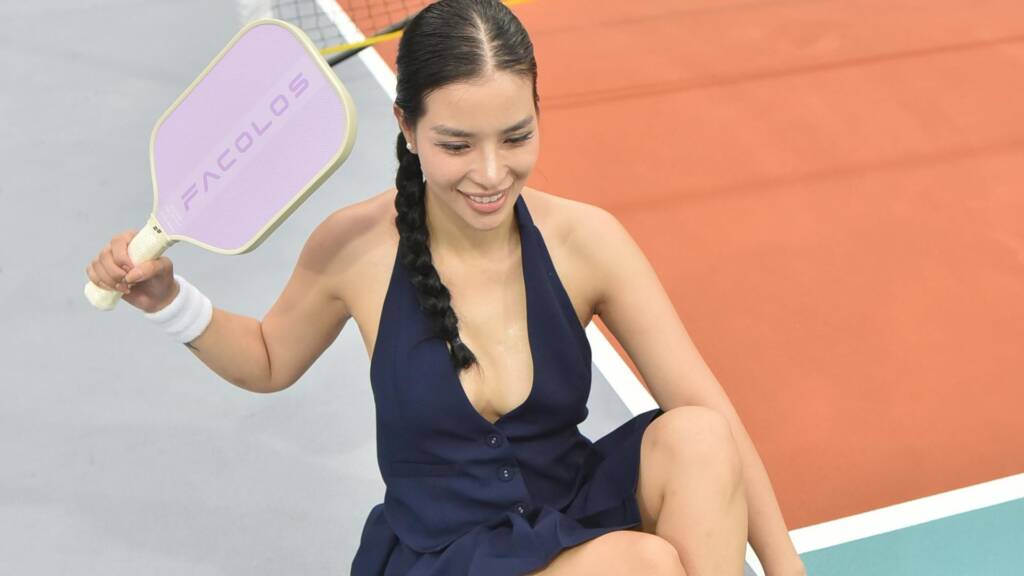
Pickleball has exploded from hobby status to nationwide obsession, and 2025 marks its most electrifying chapter yet.
With 20 million U.S. players rallying on courts from Portland to Palm Beach, the game’s pulse is faster, louder, and smarter than ever. Local parks are repainting tennis lines, rec centers are adding reservation apps, and pro tours are livestreaming to millions—all proof that strategy, not luck, now separates casual dabblers from podium regulars.
This guide is your on-court compass. We dig into singles finesse, doubles synchronization, defensive grit, offensive swagger, surgical court positioning, and snap-decision shot selection. Each tactic comes straight from current USA Pickleball rule updates, APP Tour performance data, and Sports & Fitness Industry Association research so you can trust you’re learning what works right now.
Whether you’re aiming to dominate Tuesday ladder night or punch a golden ticket to the National Championships, these insights will shorten your learning curve and lengthen your winning streak.
SINGLES STRATEGY
Mastering singles pickleball is part sprint, part chess match, and totally exhilarating. One player must cover the entire 20-foot court, manage fatigue, and outthink an equally determined rival. Use the following tactics to seize control of the point from the very first serve and maintain that edge until match-point.
Serve Deep With Power
-
Margin Of Safety: Aim two inches inside the baseline to avoid free faults while still pinning opponents.
-
Heavy Pace: Snap your wrist through contact to generate topspin, causing the ball to dive late and limit offensive returns.
-
Immediate Advantage: A deep, forceful serve keeps rivals behind the baseline and forces defensive third shots.
Return Deep And Chase The Net
-
High And Deep: Float the return shoulder height to gain time for your sprint; depth matters more than speed.
-
Sprint Mindset: As soon as the ball leaves your paddle, accelerate to the non-volley zone; arriving first lets you cut angles with volleys.
-
Force Errors: Deep returns produce awkward half-volleys that often sail long or pop up for easy put-aways.
Use The Whole Court
-
Width Strategy: Alternate sharp cross-court drives with deep down-the-line shots to keep opponents guessing.
-
Hit Behind Opponents: When you notice a weight shift or full sprint, redirect to the vacated side, forcing directional recovery.
-
Angled Approach: A short, wide ball drags the rival outside the sideline, opening acres of open court for the next pass.
Blend Power And Finesse
-
Topspin Drive: Pound shoulder-high floaters at the torso; dipping topspin makes volley contact tough.
-
Surprise Drop: After two or three heavy drives, soften a drop into the kitchen to draw a lunging pickup.
-
Aggressive Dink: If both players reach the net, dink toward shoestrings to coax a high reply rather than trading gentle pats.
Build Stamina And Patience
-
Point Construction: Rally lengths may stretch past 15 shots; trade depth and placement until you earn a high sitter.
-
Breathing Control: Use a steady exhale during swings to stay relaxed, preventing tight forearms late in games.
-
Reset Tactic: When off balance, loft a safe, deep lob instead of over-hitting an impossible winner; recovery time is priceless.
Singles demands relentless movement and smart shot selection, but executing these fundamentals shifts rallies in your favor. Deep serves and returns secure early leverage, wide targeting creates openings, power-plus-finesse keeps opponents unsure, and disciplined patience wins the final exchange.
Test each bullet in isolation during practice, then layer them into real-match combinations until instinct takes over. Victory starts with the serve, crystallizes at the kitchen line, and ends when your rival simply cannot keep pace.

DOUBLES STRATEGY
Smooth doubles play feels like telepathy: two paddles, one brain. The following tactics will help you and your partner control the kitchen, pick smart third shots, and keep opponents second-guessing every swing.
Get Both Partners To The Net
-
Synchronize Advancement: After each serve or return, agree that both players will move forward together. If one hangs back, seams appear.
-
Third-Shot Purpose: Decide before serving whether you will drop or drive. A drop buys time for a calm walk to the NVZ, while a drive sets up a “shake and bake” poach.
-
Close The Gaps: Maintain roughly six feet between partners when stationed at the line; that spacing seals the middle without leaving sideline holes.
Master The Third Shot Drop Or Drive
-
Drop When Both Rivals Are Set: A soft arc into the kitchen neutralizes ready volleyers and forces them to hit up.
-
Drive When One Rival Is Deep: Fire a topspin dart at the back-court player and surge behind it. Their rushed reply often floats high.
-
Commit, Then Reset: If the drive pops back fast, block into the kitchen; if the drop lands high, back up one step to defend.
Communicate And Stack
-
Constant Calls: Use “mine,” “yours,” and “switch” every rally; silence breeds hesitation.
-
Offensive Stack: Serve both players from the right when you want a forehand poacher hugging middle court.
-
Defensive Un-Stack: Return to traditional left–right alignment if stacking leaves the sideline exposed or confuses coverage.
Work The Angles And The Middle
-
Create Width: A wide dink drags one opponent off court; volley the next ball into the new gap.
-
Solve With Middle: Hard, low drives down the middle exploit the “no-man’s land” of shared responsibility.
-
Angle Awareness: When pushed wide yourself, reset softly back cross-court to stop the bleeding instead of replying with a risky hero shot.
Patience Wins Rallies
-
Dink Discipline: Continue soft exchanges until a ball rises above net level by at least four inches—then attack.
-
Tempo Control: Mix one fast rally with one slow rally; changing speed prevents rhythm shooters from finding comfort.
-
Error Economy: Force rivals to take the first low-percentage swing; in amateur doubles, most points end on unforced mistakes rather than blazing winners.
Defensive Countermeasures
-
Hands Up: When opponents blitz, raise your paddle and soften the blow into the kitchen to reset tempo.
-
Strategic Lob: If trapped mid-court, launch a high, deep lob over the weaker overhead player to reclaim NVZ position.
-
Switch And Recover: After a lob or sharp angle, verbally confirm “switch” so both players adjust without exposing empty real estate.
Offensive Finishing
-
Poach With Purpose: Time your cross-court poach when the ball floats shoulder high; announce “go” so your partner covers behind you.
-
Body Targets: In hands-battles at the line, drive at the opponent’s paddle-hip; it is the hardest spot to defend cleanly.
-
Celebrate Momentum: A single thunderous put-away can tilt confidence; use that boost to apply immediate pressure next serve.
Doubles is a dialogue of positioning, patience, and proactive chatter. Practice each bullet until movement becomes instinct, then combine them for rallies that feel choreographed rather than chaotic. With unified net pressure and crystal-clear communication, you and your partner will convert close games into comfortable wins.
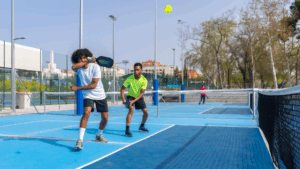
Singles vs. Doubles Pickleball: Key Differences and Strategy Adjustments
Comparing the two formats and how to adjust your play accordingly …
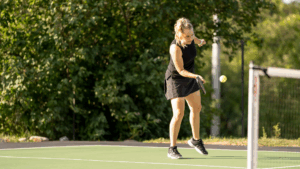
The Secret to Improving Your Game: Balancing Speed, Strategy, and Skill
Learn how to refine your pickleball technique with tips for mastering the perfect blend of agility, tactics, and precision …
DEFENSIVE PLAY
A rock-solid defense keeps you alive long enough to flip momentum and steal the rally. Think of every blocked drive or perfectly placed reset as planting doubt in your opponents’ minds and confidence in your own.
Master The Reset
-
Soft Block Technique: Loosen your grip to about three out of ten on the pressure scale, meet the incoming drive early, and angle the paddle slightly open. The ball floats into the kitchen instead of rebounding long.
-
Training Drill: One player feeds knee-high drives from mid-court while you remain at the non-volley zone: your only goal is to drop each ball harmlessly over the net. Switch roles after ten feeds.
-
Why It Works: A successful reset forces opponents to hit up on the next shot, giving you the precious split-second needed to regain balanced ready position.
Strategic Lobs
-
When To Lob: Use it sparingly when both rivals crowd the net or when a hard drive pins you deep.
-
Target Selection: Send the ball over the weaker overhead smasher’s backhand side or toward the sunniest corner at noon play.
-
Execution Keys: Bend knees, keep paddle face open, and finish high above your head. The added arc gives you and your partner time to retreat or surge forward, depending on positioning.
Anticipation And Tracking
-
Read The Paddle: Note the opponent’s swing path and shoulder angle; a closed face often signals a flat drive, while an open face telegraphs a soft drop.
-
Footwork Habit: Replace lunges with short shuffle steps so you can change direction quickly—essential against sharp angles.
-
Court Awareness: Call “switch” the instant a ball pulls your partner off the sideline; early communication prevents large gaps through the middle.
Stay Calm Under Fire
-
High Paddle Ready: Keep your paddle up at chest height with elbows relaxed. This neutral stance covers both body and sideline attacks.
-
Breathing Control: Exhale through contact on every defensive swing. Steady breathing counters the natural urge to tense up during fast exchanges.
-
Error Containment: If a shot feels risky, choose the safer deep lob or soft block instead of attempting a highlight-reel counter. Minimizing unforced errors is the real defensive victory.
Turn Defense Into Offense
-
Watch For The Lift: After blocking a hard drive, anticipate a slightly higher reply. Step in and unload a topspin roll volley to seize control.
-
Body-Line Counter: Direct counterpunches at an opponent’s paddle-side hip; it is the toughest spot to defend cleanly.
-
Momentum Shift: A single successful counter can rattle aggressive opponents. Follow it with a confident deep serve or return to reinforce the psychological edge.
Drill And Apply
-
Two-Touch Reset Rally: Rally only in the kitchen: attacker drives, defender resets. Switch roles after eight drives each.
-
Lob Escape Sequence: Start mid-court under pressure, lob deep, then recover to the non-volley zone and resume point play.
-
Anticipation Shadow Work: Without a ball, mimic shuffle steps while a partner “fakes” swing directions. Call out predicted shot types to sharpen reading skills.
Strong defense is more than survival—it is the springboard for attack. Master these techniques, and you will frustrate power hitters, exhaust bangers, and turn their best offense into opportunities for your own winning shots.
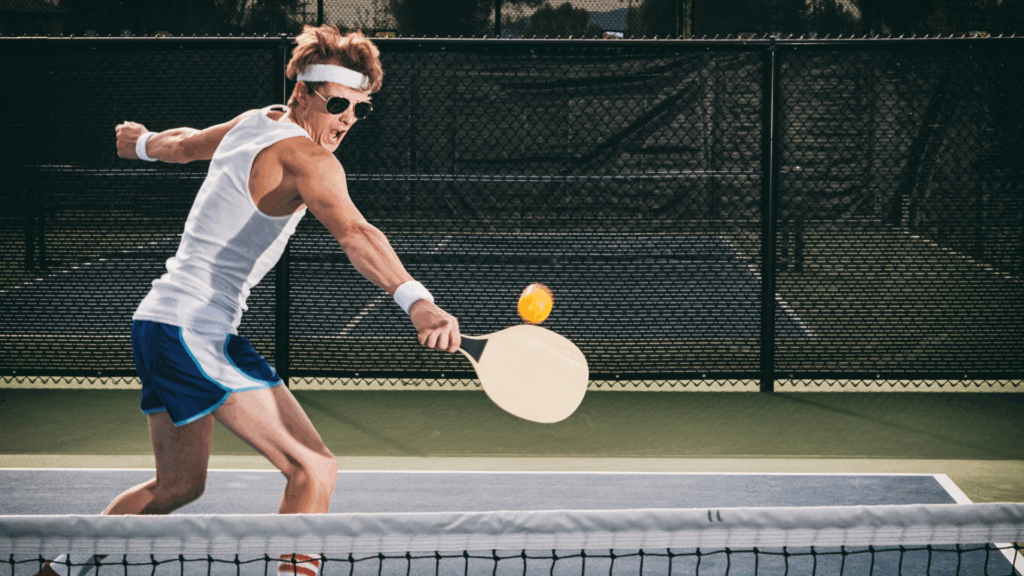
OFFENSIVE PLAY
A relentless offense wins points quickly, exhausts defenders, and sets the match’s emotional tone in your favor. Modern pickleball in 2025 rewards controlled aggression—swing big when the window opens, but only after building the point with smart placement and spin variation. The tactics below will help you dictate pace and force opponents onto their heels.
Attack When The Time Is Right
-
Patience Pays: Rally using deep, safe groundstrokes or dinks until a ball rises four inches above net level—then swing with full commitment.
-
High-Percentage Targets: Slam at open court or at the body-side hip; both require awkward reflex volleys.
-
Shot Preparation: Bend knees, load weight on your back foot, and rotate hips through contact to convert inbound pace into outbound power.
-
Error Control: If the attack window shrinks mid-swing, switch to a topspin roll instead of muscling a flat blast into the net.
Use Your Power And Your Spin
-
Topspin Drives: Brush up the back of the ball to create a dipping trajectory that lands safely yet explodes up at your opponent’s paddle.
-
Slice Approaches: Knife under low balls so they skid after bouncing, forcing rivals to lift their next reply.
-
Paddle-Face Awareness: A five-degree face angle change is the line between a wicked topspin rip and an out-the-back-fence error—practice in shadow swings.
-
Serve Variety: Even without a pre-spin toss, add sidespin or kick by striking the ball off-center; unpredictability reduces return quality.
Dominate The Net
-
Poach Timing: Cross in front only when you see a loopy cross-court dink or your partner’s setup drive—yell “go” so coverage stays intact.
-
Footwork First: Split-step the instant the opponent contacts the ball, then explode laterally to meet it in front of your body.
-
Volley Depth: Punch volleys deep to the baseline to stall counterattacks and earn short replies.
-
Smash Discipline: Overheads should travel downward at a 30-degree angle or more; aim between opponents if both linger back.
Keep Them Guessing
-
Disguised Drops: Use the same backswing as a drive, but relax grip pressure at impact; opponents freeze, expecting pace.
-
Flick Speed-Ups: From a dink posture, roll the wrist to send a sudden topspin flick at chest height—perfect for catching complacent defenders.
-
Angle Mix-Ups: Alternate body-line attacks with sharp sideline angles; unpredictability prevents opponents from camping on one threat.
-
Rhythm Disruption: Follow two high-tempo rallies with a slow, looping third rally to break a banger’s timing.
Pressure With Every Shot
-
Depth As Weapon: Keep drives and lobs within 12 inches of the baseline; constant retreat saps opponent offense.
-
Aggro Dinks: Dink faster toward shoe tops rather than floaters; even soft shots can force uncomfortable half-volleys.
-
Court Position Creep: After a strong groundstroke, advance one step inside baseline or to the kitchen; shorter reaction time equals higher error rates.
-
Psychological Edge: Celebrate well-executed attacks with quick paddle taps and upbeat words—confidence can snowball into the next rally’s intimidation factor.
Consistent offensive pressure transforms rallies into your personal highlight reel: you set tempo, choose targets, and finish points on your terms. Drill topspin drives, flick speed-ups, and poach footwork until they feel automatic. When you blend patience with calculated aggression, winners flow, opponents tighten, and the scoreboard tilts decisively your way.

COURT POSITIONING
Where you stand before, during, and after a shot often decides the rally before your paddle even moves. Good positioning shrinks opponents’ targets, buys you extra reaction time, and opens clear lanes for counter-attacks. Think of it as real-time geometry: shift a few feet and the entire angle matrix changes in your favor.
Doubles: Stay Linked With Your Partner
-
Invisible Rope Rule: Imagine a bungee cord between you and your partner; move laterally in sync so gaps never appear.
-
Six-Foot Sweet Spot: At the non-volley zone, keep roughly six feet between hips—tight enough to plug the middle, loose enough to cover lines.
-
Side-Step Shuffle: Use small shuffles rather than big lunges to mirror partner movement; stability beats reach in kitchen battles.
-
Seam Security: If one player stretches wide, the other automatically slides middle to guard the high-percentage passing lane.
-
Communication Cue: Call “move” when you notice partner drift; verbal nudges prevent silent spacing mistakes.
Doubles: Master The Transition Zone
-
No-Man’s Land Hazard: The area between baseline and kitchen invites body-line drives at your feet; pass through it quickly.
-
Third-Shot Plan: After serving, decide to drop or drive. A drop lets both players walk in calmly, a drive demands an immediate sprint behind the ball.
-
Forward Commitment: If you step inside baseline to take a short hop, finish the journey to the net instead of retreating.
-
Split-Step Timing: Just before opponents contact the ball, perform a light split step in transition to stay balanced and explode either direction.
-
Emergency Reset: Caught mid-court under pressure? Soften a block into the kitchen, then advance the final two steps while opponents lift the next ball.
Singles: Command The Center
-
Home-Base Philosophy: After every groundstroke, recover to the center-line “T” two to three feet behind the baseline. From there you cover both corners with equal reach.
-
Lateral Shuffle: Use quick side shuffles rather than full turns to stay square to the ball; this preserves forehand-backhand options.
-
Angle Denial: Central positioning cuts extreme cross-court angles in half, forcing opponents to attempt lower-percentage sideline shots.
-
Post-Wide Recovery: When pulled outside the sideline, hit back behind the opponent or deep middle, then hustle to home base before they strike again.
-
Approach Math: Only close to the net after a strong approach that forces a weak reply; otherwise, the passing lanes become highways.
Dynamic Adjustments: Offense Versus Defense
-
Offensive Creep: After a punchy drive or topspin roll, take one purposeful step forward. Reduced court distance shortens opponents’ reaction window.
-
Defensive Cushion: Facing a looming overhead? Drop two quick retreat steps to extend response time, then reset block low to neutralize the smash.
-
In-Out Rhythm: Skilled players oscillate—forward during pressure phases, back when scrambling—keeping strike zones ideal for each exchange.
-
Momentum Awareness: If your partner lobs, pause at mid-court until you confirm whether the smash returns deep or short before recommitting to net or baseline.
-
Body Alignment: Stay square to the ball with paddle out front. Rotating shoulders prematurely opens holes and complicates last-second direction changes.
Precise court positioning is the silent partner to every great shot. Drill shuffle footwork, split-step timing, and recovery sprints until movement feels automatic. Once your feet instinctively find the right spot, rallies slow down, angles narrow, and opponents wonder why every path seems blocked.
SHOT SELECTION
Choosing the right shot at the right moment turns rallies into a highlight reel. Think of every contact as a fork in the road: pick the high-percentage option and you’ll gain control; choose poorly and you’ll gift easy points.
Serve And Return Foundations
-
Deep Objective: Hit serves and returns within 12 inches of the baseline to shrink opponents’ playbook.
-
High-Arc Return: Float the ball deep and lofty so you can sprint to the non-volley zone before your rival strikes their third shot.
-
Variety Factor: Mix one power serve with one sidespin or kick serve; unpredictability lowers return quality.
Third Shot Decisions
-
Drop When They’re Set: If both opponents wait at the kitchen, arc a third-shot drop into their feet to neutralize volleys.
-
Drive When One Is Back: Fire a topspin dart at the deep player, then surge behind it for a “shake and bake” finish.
-
Self-Assessment: On windy days or when drops feel off, default to safer drives; when your drop lands consistently, lean on it to own the net.
Dink Versus Speed-Up
-
Patience Rule: Keep dinking low until the ball rises four inches above net level.
-
Green-Light Flick: When a dink floats high, roll a topspin flick at the paddle-side hip—hard to defend cleanly.
-
Error Control: If unsure, reset with another soft dink rather than forcing a rushed speed-up into the net.
Lob Leverage
-
Surprise Element: Use the lob sparingly—its power lies in rarity.
-
Ideal Moment: Lob when rivals crowd the kitchen or forget the backcourt; target the weaker overhead side.
-
Height Execution: Finish with paddle high and follow through upward; a too-low lob is an invitation for a smash.
Passing Or Dropping In Singles
-
Passing Drive: Blast a forehand pass down the line or sharp cross-court when your opponent closes the net aggressively.
-
Soft Drop: If the opponent camps baseline or looks winded, feather a drop just over the net to force a forward sprint.
-
Mix It Up: Alternate two drives with one drop so rivals cannot cheat toward either extreme.
Punish The High Ball
-
Overhead Authority: Smash any shoulder-high floater downward at a 30-degree angle toward open court.
-
Body-Line Volley: If the ball sits mid-court but not overhead, punch a deep volley at torso level; depth trumps sheer power.
-
Controlled Restraint: If the ball drifts near the baseline, aim a topspin drive that lands long-line safe instead of an all-out blast that risks sailing long.
Effective shot selection marries patience with calculated aggression. Drill each scenario in isolation—third-shot drop practice, dink speed-up reps, lob-recovery drills—then weave them together in live play. Soon every contact will feel intentional, rallies will tilt your way, and opponents will wonder how you always seem to make the perfect choice.
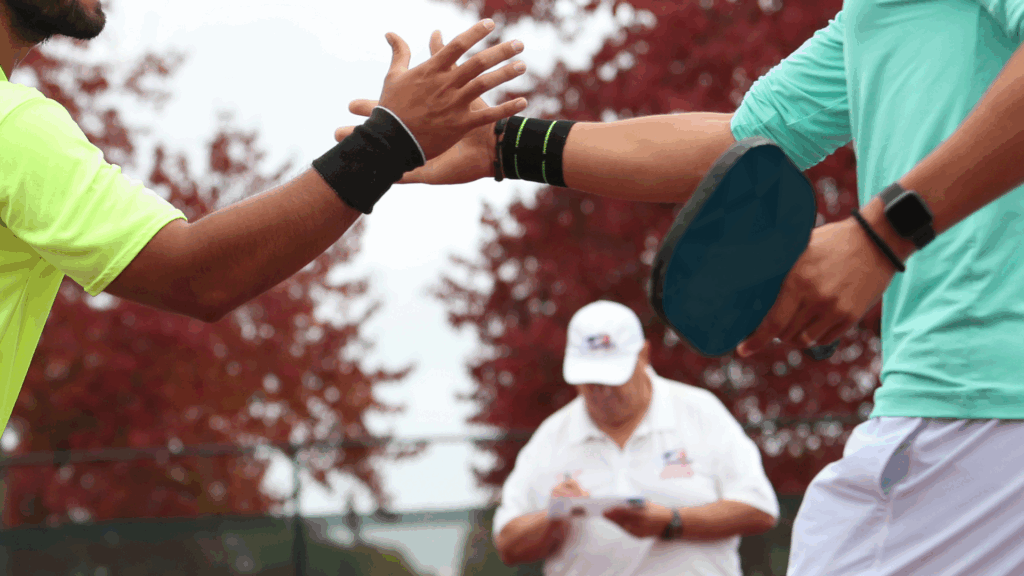
CONGRATS, YOu're A PICKLEBALL STRATEGY PRO!
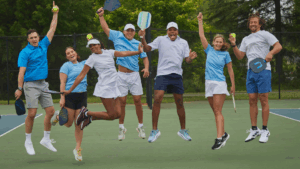
Stylish and Functional: Pickleball Apparel That Works on and off the Court
Explore clothing options that transition seamlessly from the court to everyday life without sacrificing style or performance …
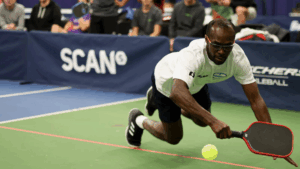
A Beginner’s Guide to Joining a Pickleball League Without Overcommitting
Find out how to enjoy the social and competitive aspects of pickleball without overwhelming your calendar …
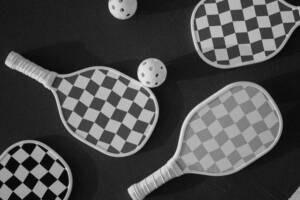
Pickleball Etiquette: What to Do (and What Not to Do) on the Court
A guide to friendly and respectful gameplay …
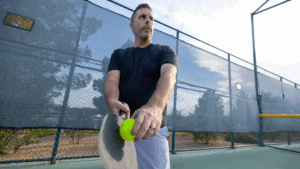
How Pickleball Became the Fastest-Growing Sport for Professionals
Dive into the surprising rise of pickleball and its growing popularity among midlife professionals …


